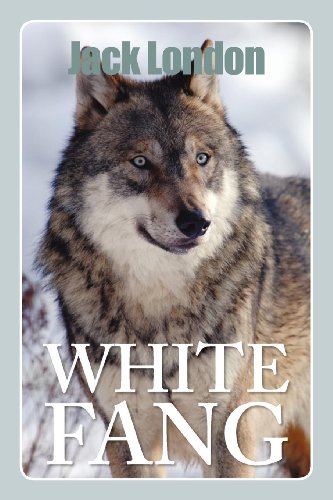LOVING LONDON
I love any author that can whisk me off to unfamiliar landscapes. Someone whose writing is so vivid that I actually vicariously enjoy the places described.
I truly admire those that can create characters so realistic that I laugh when they laugh, cry when they do and experience the entire gamut of emotions expressed throughout the story.
They can be considered exceptionally talented when they accomplish this with animals. Authors like Jack London have enthralled me like this with his most famous novels, Call of the Wild and White Fang.
Jack London’s Call of the Wild is the incredible story of Buck, the half St. Bernard half Sheepdog who is stolen
from his comfortable California estate and sold as a sled dog in the Arctic.
It is first and foremost the story of his gradual
transformation from a tame beast into a wild animal.
Told from Buck’s perspective, its often painfully
realistic narrative provides us with a thorough understanding of the phrase
“survival of the fittest”.
The moral, civilized Buck must adjust to the harsher
realities of life in the frozen North. Kill or be killed is the only morality
among the dogs of the Klondike.
Buck however is not content to merely survive; he
wants to dominate.
London's portrayal of the brutality of life in the Yukon through the eyes of a mistreated part-wolf called White Fang is another riveting literary masterpiece.
His storytelling genius breathes life into the
simplest natural occurrences. The images he paints of nature are harsh and
cruel but true and beautiful. His mastery at drawing parallels between nature’s
savagery and human cruelty is depicted in the struggle for survival for both
man and beast.
London's prolific illustrations of the vast landscapes
provide an ideal setting for White Fang’s character development.
Fang’s journey from cub to adult is fraught with
physical peril from his venturing from the safety of the protective wall of the
cave of his birth to discovering the undulations of the earth under his feet or
the terror he experiences of total immersion in water. He realizes that things
are not always as they appear.
As he struggles to understand the laws of his
existence we are able to feel his emotional grief and turmoil when his mother
is taken away. Because he sees that his very survival hinges upon understanding
the laws of the “man tribes” that adopt him, he comes to understand the
importance of strength and power. It is
because of this power that he regards men as “gods”, is trained as a sled dog
and after relentless persecution by man and dogs becomes disciplined and
solitary with superior intelligence and brute strength.
When finally he is adopted by a man who exhibits
patience, compassion and affection, White Fang returns it in kind and quickly
begins to understand one of the most important laws of man; the protection of
his owner and the defense of his property.
As we witness Fang’s eventual domestication, London
deftly illustrates that progression from nature to civilization requires
violence at some point. At the same time he considers the extent to which both
animals and humans are formed by their experiences in the world. Cruelty begets
cruelty; kindness, kindness.
As with London’s own personal story of redemption
from teenage hoodlum to married middle class writer, White Fang’s metamorphosis
from savage wolf to devoted family pet exemplifies the struggle for survival
while simultaneously searching for the love and compassion necessary for the
development of a noble spirit.
Upon its release, White Fang was an immediate
success worldwide. Although its appeal is especially popular among young
readers and generally regarded as inferior to London’s companion work “Call of
the Wild” it is still considered one of his most interesting and ambitious
works and one that helped establish him as a popular American literary figure.

